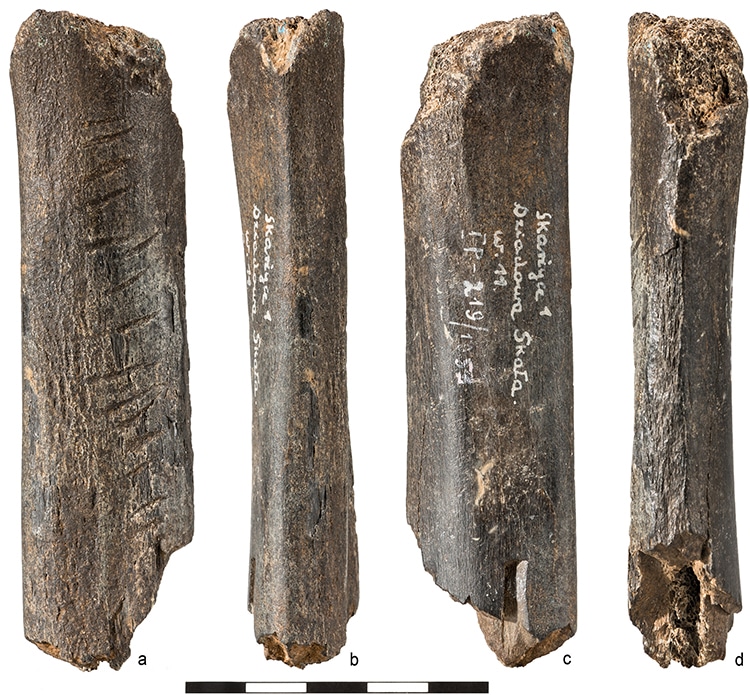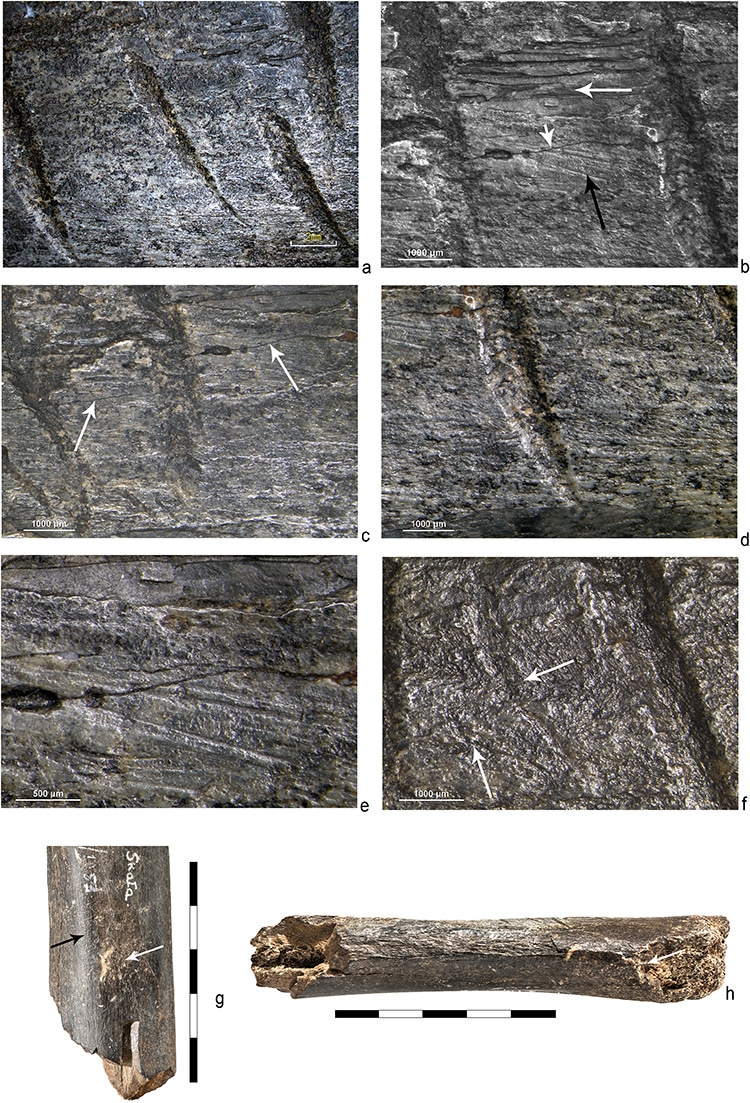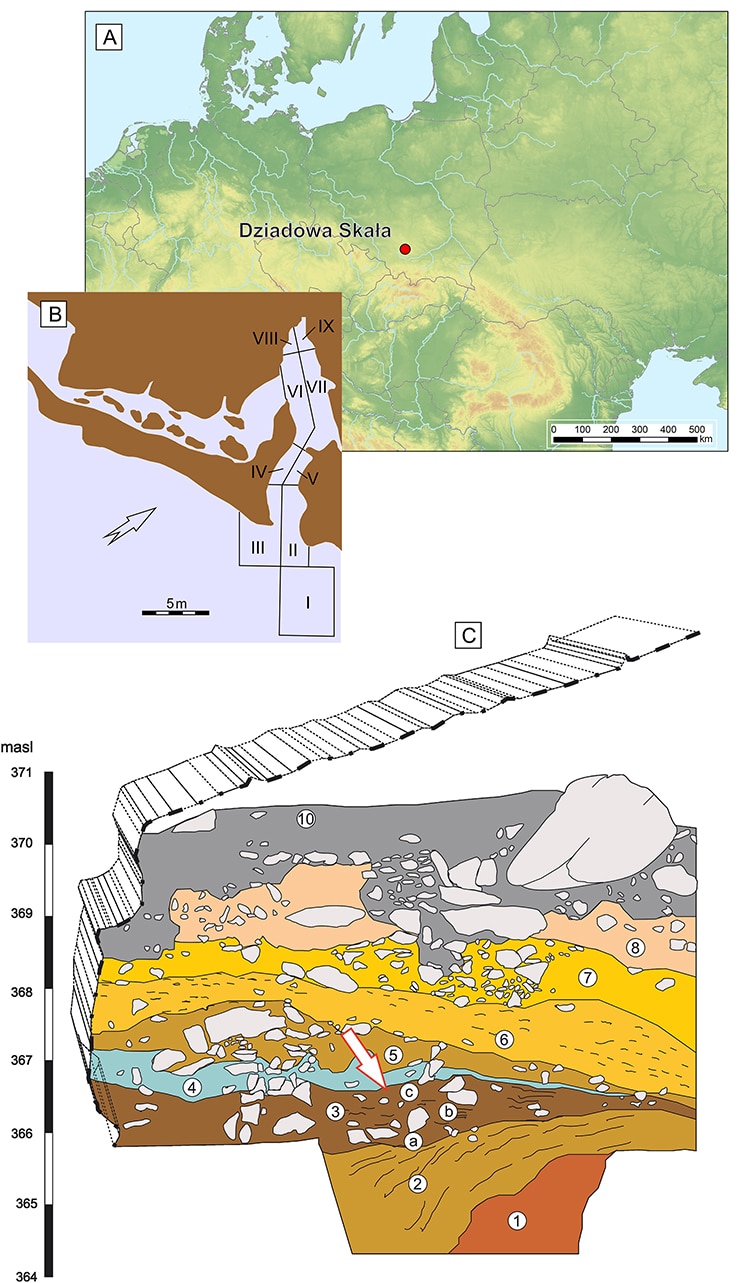The inscribed 130,000-year-old bear bone.
(Photo: Fig.
Gasior, in Ponka et al.)

The inscribed 130,000-year-old bear bone. (Photo: Fig. 2 viaT. Gąsior, in Płonka et al.)
Neanderthals, our ancienthuman cousins, left behind many remnants of their now-extinct existence.
Some leftfootprintsnow fossilized in Spain from steps they took 100,000 years ago.
Others lefthandprintsandcave arton the walls of earthen hideouts.

Detailed views of the carvings on the bone. (Photo:T. Płonka (a-d, f), M. Diakowski (e), T. Gąsior (g, h); computer processing by N. Lenkow, in Płonka et al.)
The bonefrom a bearhas been carved with deliberate, patterned lines, suggesting it was a creative endeavor.
This was recently announced by researchers in theJournal of Archeological Science.
The bone was discovered in Dziadowa Skaa Cave in the region of Czestochowa Upland, Poland.

The Dziadowa Skała Cave and drawings of deposits within. (Photo: Fig. 1 viaA. Wiśniewski, citing to Chmielewski (1958), in Płonka et al.)
Once thought to be a rib, it is actually a radial bone from a bear.
A team from the University of Wrocaw in Poland has recently re-examined the artifact, discovering this misclassification.
Through microscopy and X-ray computed tomography, they zoomed in on the markings incised into the bone.
The 17 slashes in the bone are grouped in parallel and purposeful arrangements.
The team also tried using flint knives and other prehistoric tools to carve similar markings onto modern cow bones.
They discovered that the way the end of each mark curves slightly indicates a single right-handed ancient carver.
The incisions are evidently an effect of a deliberate action, not a side-effect of some practical activity.
This 130,000-year-old bear bone with incisions may be the earliest example of Neanderthal art.
Detailed views of the carvings on the bone.
The Dziadowa Skaa Cave and drawings of deposits within.
(Photo: Fig.
Wisniewski, citing to Chmielewski (1958), in Ponka et al.)